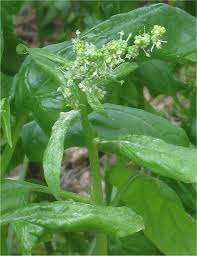Comparison of Fish Assemblages of the Crutcho Creek Drainage Basin, Oklahoma (Tinker Air Force Base)
Background:The Department of Defense which is a participant of the CESU Network manages nearly 25 million acres of land, and the natural and cultural resources found there.
DoD’s primary mission is national defense.
DoD’s conservation program supports this mission by ensuring realistic training areas, and managing its resources in ways that maximize available land, air, and water training opportunities.
DoD land management issues and objectives have many similarities to other federal, state, and private land management programs.
Riparian stream corridors are at the heart of healthy ecosystems that support robust military missions, all requiring access to land and water resources in which they operate.
Riparian areas are rich in ecological and species diversity which creates stability in those ecosystems.
Unfortunately, they are also a route to circulatory system of the ecosystem creating vulnerability when those systems are negatively impacted.
Impacts such as global climate change, human perturbations (i.e, urbanization, fragmentation, habitat loss) and invasive species become serious threats to the health of these sensitive zones.
Urbanization is known to have negative effects on fish assemblage structure and species richness (Tabit and Johnson 2002).
However, few studies have been published concerning effects of urbanization on prairie stream fishes or of the patterns of fish assemblages on DoD lands.
Tinker AFB and its surrounding urban areas has experienced these impacts to its sensitive riparian systems over the last four decades.
Fortunately, we have also been monitoring and researching the resulting population dynamics of the stream fauna that act as an indicator ecosystem health.
These monitoring studies have comprised collections of fish from over 80 streams in the mid-west and southern plains dating back to the 1970’s.
Tinker AFB sampling sites are among these locally and regionally studied streams.
Observations from these studies have also shifted understanding of basic community population dynamics as historically plant and animal populations were thought to strive through ecological succession to a climax or a community in “equilibrium” (Odum and Odum 1959).
These historical fish collection data show that fish communities and other communities may change considerably over time, but in decades or the long-term will tend to return toward a sort of equilibrium.
However, in stream communities there are significant disturbances which can be natural (i.e., drought and flooding) or human (i.e., urbanization, pollution) induced that push that population in some direction spatially over time but typically returning to a sort of temporary equilibrium as conditions return to normal or “loose equilibrium” as described in “Stream Fish Community Dynamics – a Critical Synthesis” (Matthews and Marsh-Matthews 2017).
Previous surveys on Tinker AFB streams and stream basins around the Base have been conducted over the last few decades with the last comprehensive survey in 2009-201 0. These surveys have monitored the fish assemblages and their fluctuations in response to a multitude of environmental factors including anthropogenic impacts of urban development and Tinker AFB mission activities.
This survey will provide a comparison of data to historical fish population dynamics helping us to better understand how these impacts effect sensitive riparian habitat and the fish assemblages that inhabit them.
Research will provide sound scientific data to make recommendations on stream and riparian zone management.
This continuing contribution to long-term monitoring of stream fishes in the mid-west and southern plains will also provide testing, insight and improve understanding of theories of “loose equilibrium” providing a perspective of fish community population dynamics on a global scale.Brief Description of Anticipated Work:The government seeks to conduct research on Tinker AFB streams and streams in adjoining basins around the Base with key objectives of monitoring fish assemblages, community dynamics and effects of AF mission activities on sensitive riparian areas.
In order to make recommendation on stream and riparian zone management.
Objectives include:
a.
Review data and literature from previous studies of fishes of the Crutcho Creek drainage basin.
b.
Conduct a one-year temporal study of fish assemblages of the Crutcho Creek drainage basin, by seasons, with emphasis on sites previously sampled both on and off Tinker Air Force Base property.
c.
Characterize habitats of sampling sites and compare to habitats at the same sampling sites approximately 10 years ago; perform multivariate or other analyses of habitat use by fishes in the present study.
d.
Compare fish communities found in this study to those found in previous studies in the Crutcho Creek drainage basin, both on and off Tinker Air Force Base property.
e.
Interpret data from this study in the context of broad ecological concepts of fish community dynamics and natural variation as a baseline for detecting changes in the future.
f.
Identify a subset of sites in the Crutcho Creek drainage basin both on and off Tinker Air Force Base property that collectively reflect overall fish diversity, and are suitable sites for continued long-term monitoring.
g.
Based on findings of this study, make recommendations for management or restoration of fish communities in the Crutcho Creek drainage basin.
h.
Communicate results of this study through publications and presentations at meetings.Please see attached SOI, W81EWF-20-SOI-0034 for additional information and submission requirements.
DoD’s primary mission is national defense.
DoD’s conservation program supports this mission by ensuring realistic training areas, and managing its resources in ways that maximize available land, air, and water training opportunities.
DoD land management issues and objectives have many similarities to other federal, state, and private land management programs.
Riparian stream corridors are at the heart of healthy ecosystems that support robust military missions, all requiring access to land and water resources in which they operate.
Riparian areas are rich in ecological and species diversity which creates stability in those ecosystems.
Unfortunately, they are also a route to circulatory system of the ecosystem creating vulnerability when those systems are negatively impacted.
Impacts such as global climate change, human perturbations (i.e, urbanization, fragmentation, habitat loss) and invasive species become serious threats to the health of these sensitive zones.
Urbanization is known to have negative effects on fish assemblage structure and species richness (Tabit and Johnson 2002).
However, few studies have been published concerning effects of urbanization on prairie stream fishes or of the patterns of fish assemblages on DoD lands.
Tinker AFB and its surrounding urban areas has experienced these impacts to its sensitive riparian systems over the last four decades.
Fortunately, we have also been monitoring and researching the resulting population dynamics of the stream fauna that act as an indicator ecosystem health.
These monitoring studies have comprised collections of fish from over 80 streams in the mid-west and southern plains dating back to the 1970’s.
Tinker AFB sampling sites are among these locally and regionally studied streams.
Observations from these studies have also shifted understanding of basic community population dynamics as historically plant and animal populations were thought to strive through ecological succession to a climax or a community in “equilibrium” (Odum and Odum 1959).
These historical fish collection data show that fish communities and other communities may change considerably over time, but in decades or the long-term will tend to return toward a sort of equilibrium.
However, in stream communities there are significant disturbances which can be natural (i.e., drought and flooding) or human (i.e., urbanization, pollution) induced that push that population in some direction spatially over time but typically returning to a sort of temporary equilibrium as conditions return to normal or “loose equilibrium” as described in “Stream Fish Community Dynamics – a Critical Synthesis” (Matthews and Marsh-Matthews 2017).
Previous surveys on Tinker AFB streams and stream basins around the Base have been conducted over the last few decades with the last comprehensive survey in 2009-201 0. These surveys have monitored the fish assemblages and their fluctuations in response to a multitude of environmental factors including anthropogenic impacts of urban development and Tinker AFB mission activities.
This survey will provide a comparison of data to historical fish population dynamics helping us to better understand how these impacts effect sensitive riparian habitat and the fish assemblages that inhabit them.
Research will provide sound scientific data to make recommendations on stream and riparian zone management.
This continuing contribution to long-term monitoring of stream fishes in the mid-west and southern plains will also provide testing, insight and improve understanding of theories of “loose equilibrium” providing a perspective of fish community population dynamics on a global scale.Brief Description of Anticipated Work:The government seeks to conduct research on Tinker AFB streams and streams in adjoining basins around the Base with key objectives of monitoring fish assemblages, community dynamics and effects of AF mission activities on sensitive riparian areas.
In order to make recommendation on stream and riparian zone management.
Objectives include:
a.
Review data and literature from previous studies of fishes of the Crutcho Creek drainage basin.
b.
Conduct a one-year temporal study of fish assemblages of the Crutcho Creek drainage basin, by seasons, with emphasis on sites previously sampled both on and off Tinker Air Force Base property.
c.
Characterize habitats of sampling sites and compare to habitats at the same sampling sites approximately 10 years ago; perform multivariate or other analyses of habitat use by fishes in the present study.
d.
Compare fish communities found in this study to those found in previous studies in the Crutcho Creek drainage basin, both on and off Tinker Air Force Base property.
e.
Interpret data from this study in the context of broad ecological concepts of fish community dynamics and natural variation as a baseline for detecting changes in the future.
f.
Identify a subset of sites in the Crutcho Creek drainage basin both on and off Tinker Air Force Base property that collectively reflect overall fish diversity, and are suitable sites for continued long-term monitoring.
g.
Based on findings of this study, make recommendations for management or restoration of fish communities in the Crutcho Creek drainage basin.
h.
Communicate results of this study through publications and presentations at meetings.Please see attached SOI, W81EWF-20-SOI-0034 for additional information and submission requirements.
Related Programs
Basic, Applied, and Advanced Research in Science and Engineering
Department Of DefenseObtain Full Opportunity Text:
FY20 Railroad Trespassing Suicide Prevention Grant Program
Additional Information of Eligibility:
This opportunity is restricted to non-federal partners of the Great Rivers and Great Plains Cooperative Ecosystems Studies Units (CESU)
Full Opportunity Web Address:
https://www.grantsolutions.gov/gs/preaward/previewPublicAnnouncement.do?id=76418
Contact:
Agency Email Description:
rhoda.a.lewis@usace.army.mil
Agency Email:
Date Posted:
2020-06-09
Application Due Date:
Archive Date:
2020-08-08
Social Entrepreneurship
Spotlight
When it Comes to Social Enterprises, Failure is the Best Platform for Innovation

In the world of social enterprises, failure is a cringe-worthy moment nobody wants to talk about. But, social entrepreneurs can benefit from their failures.

